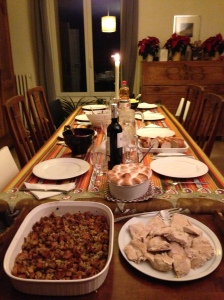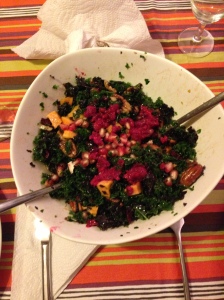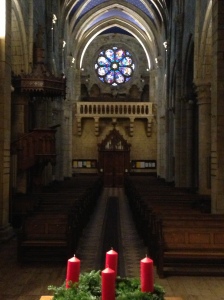When I decided at the end of October that I would be writing in my blog every day for November, I didn’t know what I was getting into. I knew it was going to be challenging, but I wasn’t sure exactly what the content would be and how it would take shape.
I think the hardest part was there were some days when I just did not feel like writing at all. It was tough to come up with something on those days and to overcome the temptation to quit.
The best part was seeing the writing process become easier. After about three weeks, I felt like I got into a groove, and posting every day didn’t seem too hard. I loved watching my writing evolve too.
The most regrettable part was that in writing every day, I let some other things fall through the cracks…like keeping in touch with far away friends. That may be December’s Project.
The most surprising part was that I didn’t always write what I had intended to write. I would sometimes make plans about something I wanted to write about, but then events from the day would take over and put themselves down on the page. (For example, I know that I need to take time to reflect on the past month’s writing process, but I actually want to tell a story about a young boy I met at a family’s house at lunch. They made baskets of tiny crêpes and all sorts of toppings could be found on the two tables joined together to accommodate the guests. At the end of the meal, the young boy announced that he had eaten 12 crêpes. When I remarked on how that was impressive, he proudly told me that his record was 18. The End. You see? Voilà! An embedded story.)
To revisit the goals from November 1, I wanted to
1) Overcome the trepidation I felt when posting in my blog. I think publishing something every day took care of that.
2) Unleash my creativity. The fact that I wanted to write about topics that came to mind that day instead of pre-determined prompts showed me that I was thinking creatively. I think that in addition to putting words on a page, writing is also a kind of mindset, a way of looking at the world for inspiration, and filtering life’s events to form a story.
3) Find my voice. This one is tricky, since a writer’s voice doesn’t just develop in thirty days. But seeing a progression in the style and form of my posts made me feel like something was beginning to take shape.
4) Find a clearer picture of my blog’s identity. I’ve determined that there may not be a clear genre for the types of things I want to write, but I am ok sitting in that uncertainty for now. I have ideas about overarching categories and themes, and we’ll see where that goes in the coming weeks.
Thank you to those who have been tuning in faithfully to this month’s musings. Now that November is over, don’t fret! You can go back to read what you missed, or check out the new pictures in the Gallery. I will be back in December, not every day, but more regularly than I have been in the past.
And finally, the question remains: would I do this again? Ask me in October…




